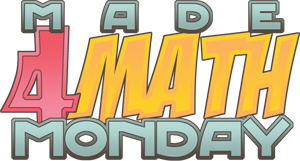
Here is a box link for downloading the MS Word file.
It includes the instructions, game board and cards.
Place value and decimal fractions feature large in the South African Grade 6 curriculum. This is a game I made to help learners become more familiar with place value, and how numbers change when we multiply or divide them with 10, or multiples of 10.
In particular I'm using this game as a springboard to get learners to think about shifting the digits to different place values, rather than blindly adding zeroes/moving the decimal point.
BASIC IDEA
Learners work in groups, each group has a 'place value board' and a marker with a single digit, which starts in the Units place, and can move towards the left or right through different place values.
Teams elect to draw a yellow or red card, which will instruct them to multiply or divide by a multiple of ten - effectively, shift the digit along the board. Red cards say multiply or divide by 1000 or even 10 000; yellow cards only have 1, 10 or 100. Depending on their choice of colour and the operation on the card, they will shift their marker and write the resultant 'new total' on the card, before choosing a new one.
The first team to make it 'off the chart' on the left hand side wins. Going 'off the chart' on the right has a penalty e.g. temporary suspension from the game.
* * *
I've tried it out once, last week.
What went well:
My girls understood what to do, got going, and all too soon one team had won.
They enjoyed the game.
When we had to do similar operations later in the week, I could remind them of the game, and they'd find their feet.
What could have been better:
I did not shuffle the cards well enough, so there were too many multiplications coming up, too few divisions. This meant one team won rather quickly.
I should have left more time for the game, perhaps: 10 minutes for getting into groups, intro, distributing stuff; 15-20 minutes for playing, 10-15 minutes for an individual activity answering problems like the ones that come up in the game.
A note on the document (see link at the top). Here in South Africa we use a comma to indicate the decimal point - mainly at school (eccentric, I know). We leave spaces between sets of three place values. I've adapted the Word document to follow the US convention, but anyone can change it.
MISTAKES/SUGGESTIONS
This was a first try. I'm new at this and open to corrections or suggestions!
I like that you included what you did as well as your reflections on what worked and what didn't.
ReplyDeleteThis comment has been removed by the author.
ReplyDeleteI forgot to add that the instructions and set-up were too complicated for my boys class. Their group energy is antsy and chaos just a few steps away...One or two-step instructions work best with them.
ReplyDeleteI'll have to figure out a way to get the same learning across in a different way, for them. Maybe an individual worksheet version of the game with the competitive element being a prize for the first person to come up with the correct (final) answer, based on a set sequence of operations. Hmmmm.
Thanks for sharing. I'll use it to teach my students at a nearby tutorial center.
ReplyDelete